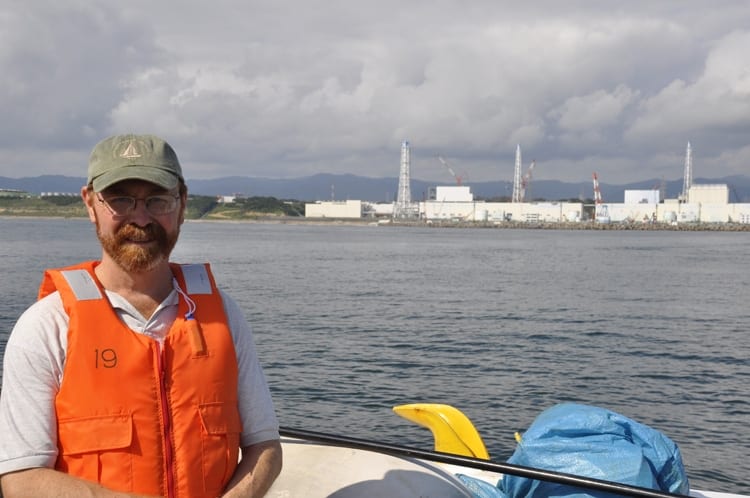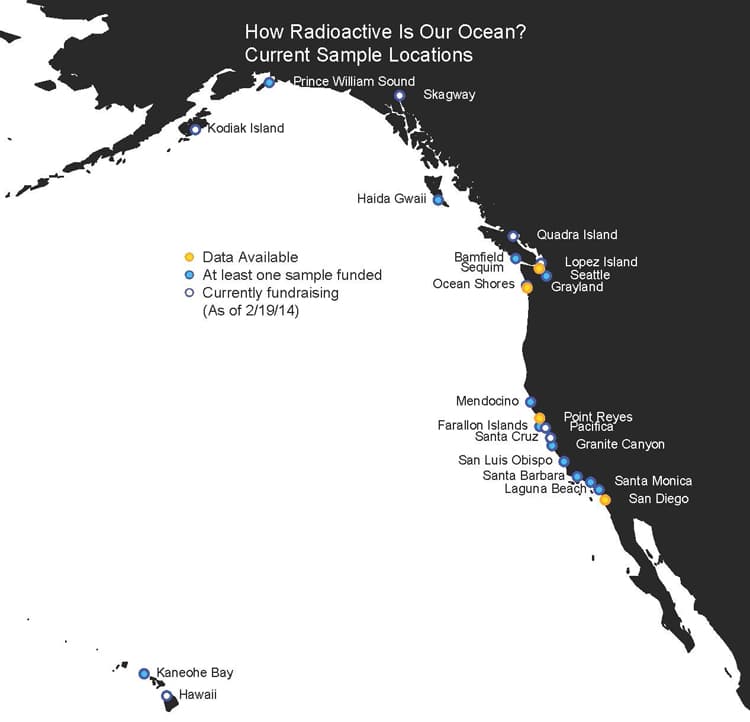Three Years after Fukushima: Tracking Radionuclides in the Pacific Ocean
February 19, 2014
Scientists have been keeping a close eye on how radionuclides from the Japanese power plant are being transported in the Pacific Ocean since the Fukushima Dai-ichi Nuclear Power Plant accident in March 2011. Now, three scientists are taking a closer look at cesium transport near Japan and across the Pacific, including when and where radiation from Fukushima could arrive on North America’s West Coast. In a press conference, these three researchers will discuss results from computer models predicting how cesium-137 is being dispersed in the Pacific Ocean, three years of water testing in the northern Pacific Ocean, and a new public crowdsourcing campaign monitoring radiation levels on the West Coast.
WHO:
Ken Buesseler: Senior Scientist, Center for Marine and Environmental Radioactivity, Woods Hole Oceanographic Institution, Woods Hole, Massachusetts, U.S.A.
Yukio Masumoto: Professor, Department of Earth and Planetary Science, Graduate School of Science, University of Tokyo, Tokyo, Japan
John N. Smith: Senior Research Scientist, Bedford Institute of Oceanography, Fisheries and Oceans Canada, Dartmouth, Nova Scotia, Canada
WHAT:
Press Conference with scientists researching Fukushima radiation in the Pacific
WHEN:
Monday, Feb. 24, 2014 at 9:00 a.m. HAST (2:00 p.m. EST)
WHERE:
Hawaii Convention Center, 1801 Kalakaua Ave., Honolulu, HI
Ocean Sciences Meeting Press Room, Room 302B
Reporters are welcome to call in to the press conference. For dial-in instructions, contact WHOI Media Relations at 508-289-3340, media@whoi.edu.
Supplementary materials available at:
Woods Hole Oceanographic Institution: www.whoi.edu/news-release/Fukushima-Advisory
WHY:
Nearly three years after the tsunami that resulted in the Fukushima Dai-ichi Nuclear Power Plant accident, questions remain about how much radioactive material has been released and how widely and quickly it is dispersing in the Pacific Ocean. The leading researchers, who have been tracking and studying this radioactive material, will present their latest findings.
###
Ken Buesseler is a Senior Scientist at the Woods Hole Oceanographic Institution (WHOI) who specializes in the study of natural and man-made radionuclides in the ocean. His work includes studies of fallout from atmospheric nuclear weapons testing, assessments of Chernobyl impacts on the Black Sea, and examination of radionuclide contaminants in the Pacific resulting from the Fukushima nuclear power plants. Dr. Buesseler has served as Chair of the Marine Chemistry and Geochemistry Department at WHOI, as Executive Scientist of the U.S. Joint Global Ocean Fluxes Planning and Data Management Office, and two years as an Associate Program Director at the U.S. National Science Foundation, Chemical Oceanography Program. In 2009, he was elected Fellow of the American Geophysical Union and in 2011 he was noted as the top cited ocean scientist by the Times Higher Education for the decade 2000-2010. He is currently Director of the new Center for Marine and Environmental Radioactivity at WHOI. For more info, visit his lab, Café Thorium.
The Woods Hole Oceanographic Institution is a private, non-profit organization on Cape Cod, Mass., dedicated to marine research, engineering, and higher education. Established in 1930 on a recommendation from the National Academy of Sciences, its primary mission is to understand the ocean and its interaction with the Earth as a whole, and to communicate a basic understanding of the ocean’s role in the changing global environment.


